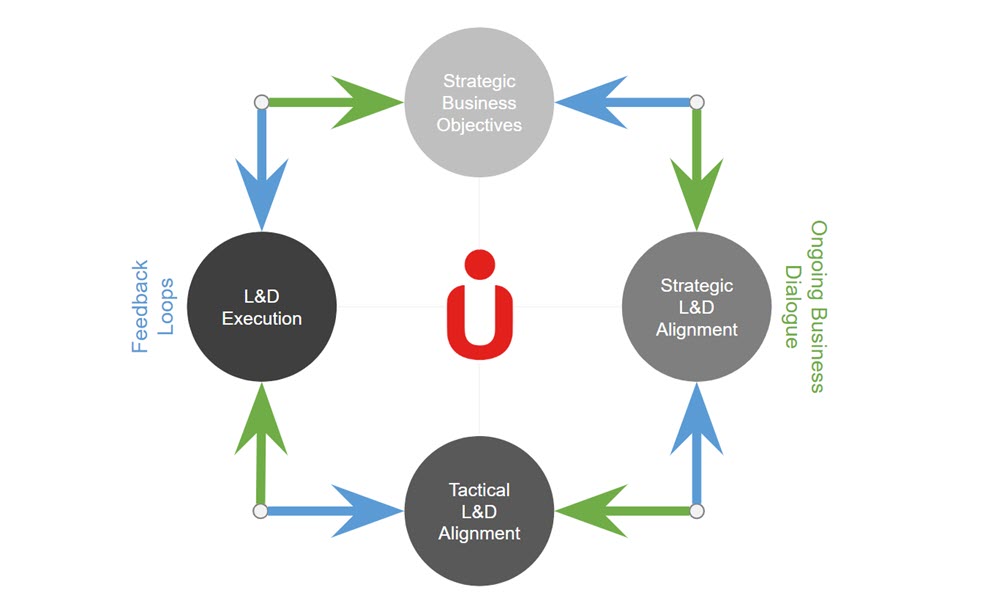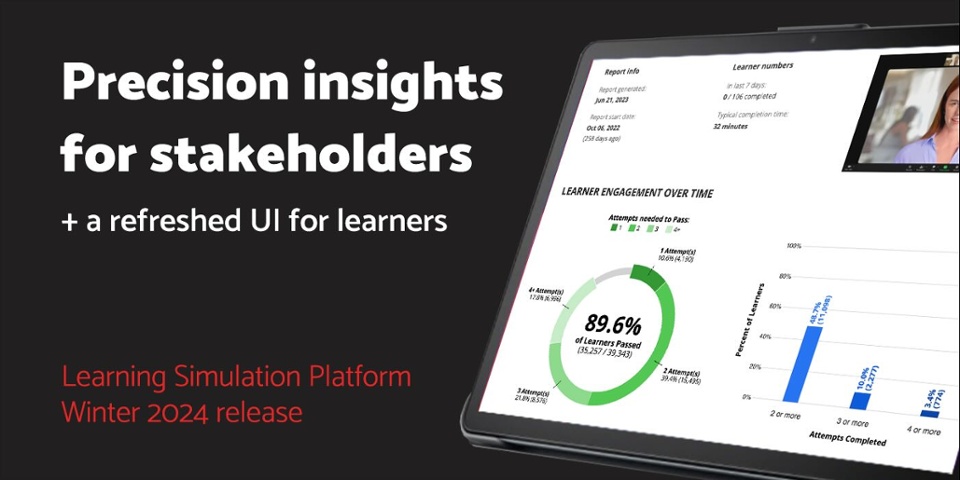Three steps to get started with simulation learning

Virtual learning is poised to leap forward during the Covid-19 public health crisis because workers in the knowledge economy have shifted to virtual environments. Notably, Covid-19 is just a catalyst; the digitization of work and supporting technologies are forcing change away from technical skills that computers can automate to soft skills that are uniquely human. As the working world becomes more digital and automated, so too does much of the learning world.
Simulation technology allows L&D organizations to address digital transformation through solutions that are at the intersection of behavioral learning and high-end, immersive digital delivery methods. Behavioral learning principles indicate that knowledge does not necessarily lead to skill acquisition and behavior change. Instead, the ability to learn and practice behaviors during learning events is more likely to lead to mastery of those behaviors and application on the job..Not only do simulations change behavior, but they can be easily designed, developed and delivered - making them an ideal choice for L&D leaders looking for innovative solutions today.
There are three first steps to getting started with simulations:
-
Align learning to business goals
-
Build effective content
-
Measure and track results
Step one: Align learning to business goals
The first step is aligning the program to the business. Alignment is a critical step to reducing scrap and improving quality. It begins with understanding strategic business objectives and then linking the strategic focus of L&D to those objectives. An important distinction is that the learning outcomes need to focus on measurable behaviors.
For instance, if an organization is facing legal consequences for questionable ethical practices and needs to improve the ethical behaviors of its employees, not just its written policy, the organization must do more than share a job aid on ethics or simply make employees aware of the new standards. An immersive, behavioral simulation places learners in real-life ethical dilemmas and requires them to respond to the situation. By tracking and scoring reactions against a rubric, it is easy to track whether individuals (and the entire organization) fully understand and appropriately apply the new ethics policies.
Figure 1 provides a model for aligning L&D to the business. Alignment begins with the strategic business objectives and linking L&D’s strategy to them through dialogue with business leaders. Then L&D aligns the curriculum tactically by planning and executing programs aligned to the strategy. The arrows around the model convey that the steps are recursive. Each step connects to the step ahead and the step behind so the process is iterative and continuously improves alignment.
Figure 1. Model for Aligning Learning to Business Goals
 Alignment begins with conversations with stakeholders about business needs. The conversation often involves developing a logic model that connects the key behaviors in the program to the business outcomes in an if-then fashion. If learners acquire knowledge and skills about new ethical standards, they can identify at-risk situations. If they can identify at-risk situations, they can choose among appropriate behaviors. If appropriate behaviors are being applied, unethical behaviors are avoided and few ethics violations should occur.
Alignment begins with conversations with stakeholders about business needs. The conversation often involves developing a logic model that connects the key behaviors in the program to the business outcomes in an if-then fashion. If learners acquire knowledge and skills about new ethical standards, they can identify at-risk situations. If they can identify at-risk situations, they can choose among appropriate behaviors. If appropriate behaviors are being applied, unethical behaviors are avoided and few ethics violations should occur.
Step two: Build effective content
Once alignment is achieved, the instructional design team focuses on the situations and the behaviors that need to be learned and practiced during the simulation. A storyline is created with real-life roles, teams, business situations, and challenges. The key to learning during the storyline is immersing the learner in the story as a participant. How? Actors fill the roles of other team members, and they are filmed from the learner’s point of view. Actors carry on dialogue with other team members, but they also look directly at the camera (learner) and ask questions, pushing the learner to make decisions in the moment. It is a remarkably powerful technique for the learner that triggers cognitive, emotional, and behavioral processes.
ETU’s simulation technology platform supports behavioral learning principles to create simulations which assess learner skills, immerse them in real-life situations, test their performance, and score behaviors to track learning.
The process of building a course on the ETU platform centers around the main story, which is broken into montages that terminate with a decision for the learner. In an immersive simulation, there are usually three or four response options. Those options lead to other sequential decision points. If the storyline is not well organized, the options become overwhelming quickly. However, the learning platform from ETU provides an interactive diagram for building the story, defining decision points, and building response options. Each response is classified as optimal, suboptimal, or critical.
Step three: Measure and track
Often, scenario-based simulations have a hidden value because measurement is baked into the learning event. During the simulation, learners choose the best course of action for the situation presented. Each action is scored based on a rubric. The optimal path through the simulation receives the highest score. Lower scores are given for suboptimal and critical answers. In the end the individual learner receives a report showing strengths and areas of opportunity. By measuring decisions in this way, the final report demonstrates that a learner is ready to perform (or not) on the job. This measurement approach bypasses the traditional Level 1 approach to training evaluation (a la Kirkpatrick and Phillips) and provides direct insight into application and performance. By aggregating the scores, leaders can quickly assess whether the workforce is ready for the next business challenge or needs further development.
Here are some tactical steps that organizations can take that align with our three broad steps to drive behavioral change with simulations:
Alignment
- Discuss business objectives with leaders and determine how L&D can align with closing skill gaps
- Create an if-then logic model to connect courses to behaviors to outcomes
Build content
- Create a storyline with optimal, suboptimal and critical paths based on judgments / choices made by learners
- Build the story structure in the simulation platform
- Store, organize and deploy simulation content, questions, and reports on the platform
- Allow learners to practice by returning to the simulation
Measurement
- Create a scoring rubric for each response that aligns to the pathways
- Provide feedback to learners about their performance
- Use summary information across learners to demonstrate performance improvement across the workforce
- Aggregate individual scores to demonstrate that the workforce is ready for upcoming business challenges

